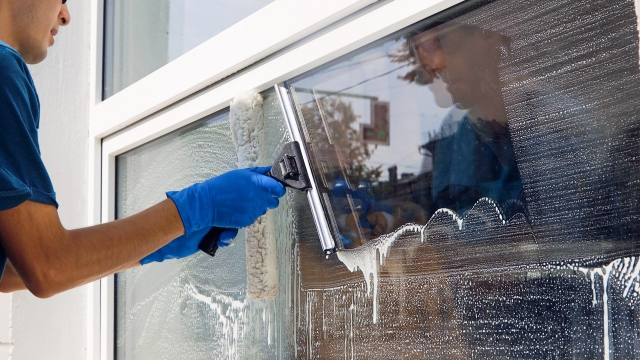
Unveiling the Magic of Switchable Film: A Window to the Future

Switchable Film technology is revolutionizing the way we interact with windows and glass surfaces, offering a dynamic solution that adapts to our changing needs. Imagine being able to instantly switch between transparent and opaque modes at the touch of a button, providing privacy or clarity on demand. This futuristic innovation is not just a concept in science fiction; it is a tangible reality that is reshaping our built environment.
With Switchable Film, windows are no longer static barriers but dynamic interfaces that offer versatility and control. This smart film can be applied to windows, partitions, and other glass surfaces, transforming them into interactive elements that cater to different preferences and requirements. Whether it’s creating a private workspace, blocking out excessive sunlight, or enhancing the aesthetic appeal of a room, Switchable Film offers a customizable solution that seamlessly integrates technology with functionality.
Types of Switchable Film
Switchable film technology comes in various forms to cater to different needs. One common type is PDLC film, which uses liquid crystals to switch between opaque and transparent states. Another type is thermochromic film, which changes color or opacity in response to temperature variations. Additionally, electrochromic film can adjust its tint based on an electrical charge.
An emerging trend is the use of photochromic film, which darkens when exposed to sunlight and reverts to a lighter shade indoors. This type of switchable film offers energy-saving benefits by reducing the need for cooling in sunlit areas. Moreover, there is also smart glass film that can be controlled remotely to transition from translucent to clear, providing privacy on demand.
Applications of Switchable Film
Switchable Film has a wide range of applications in various industries. One of the primary uses of this innovative technology is in smart windows, where the film can change from transparent to opaque with the press of a button. This feature is a game-changer in architecture and interior design, allowing for dynamic control over privacy, light, and energy efficiency.
In the automotive sector, Switchable Film is utilized in sunroofs to control the amount of light and heat entering the vehicle. This not only enhances the driving experience by reducing glare and heat buildup but also improves energy efficiency by reducing the need for air conditioning. Additionally, Switchable Film can be integrated into rearview mirrors to automatically dim in response to headlights from trailing vehicles, enhancing safety on the road.
Moreover, Switchable Film finds applications in the healthcare industry, particularly in privacy partitions in hospitals and clinics. By incorporating this technology into glass partitions, healthcare facilities can create versatile spaces that offer privacy when needed while maintaining an open and bright environment when required. This flexibility contributes to the comfort and well-being of patients and staff alike.
Future Developments in Switchable Film
In the coming years, the evolution of switchable film technology is poised to revolutionize various industries. New research and advancements in materials science are expected to lead to improved efficiency and performance of switchable films. As more companies invest in this innovative technology, we can anticipate a wider range of applications, from smart homes to transportation.
One exciting area of development is the integration of switchable film with IoT systems. By connecting switchable film to smart devices and sensors, users will be able to control their switchable windows remotely via their smartphones or voice commands. This enhanced connectivity will not only increase convenience but also contribute to energy savings and enhanced security measures in buildings.
Switchable Film Quote
Furthermore, the future of switchable film holds great potential for sustainability initiatives. With the focus on energy efficiency and reducing carbon footprints, switchable film can play a significant role in achieving these goals. As researchers continue to explore eco-friendly materials and manufacturing processes, we can expect switchable film technology to become more environmentally friendly and cost-effective for widespread adoption.



